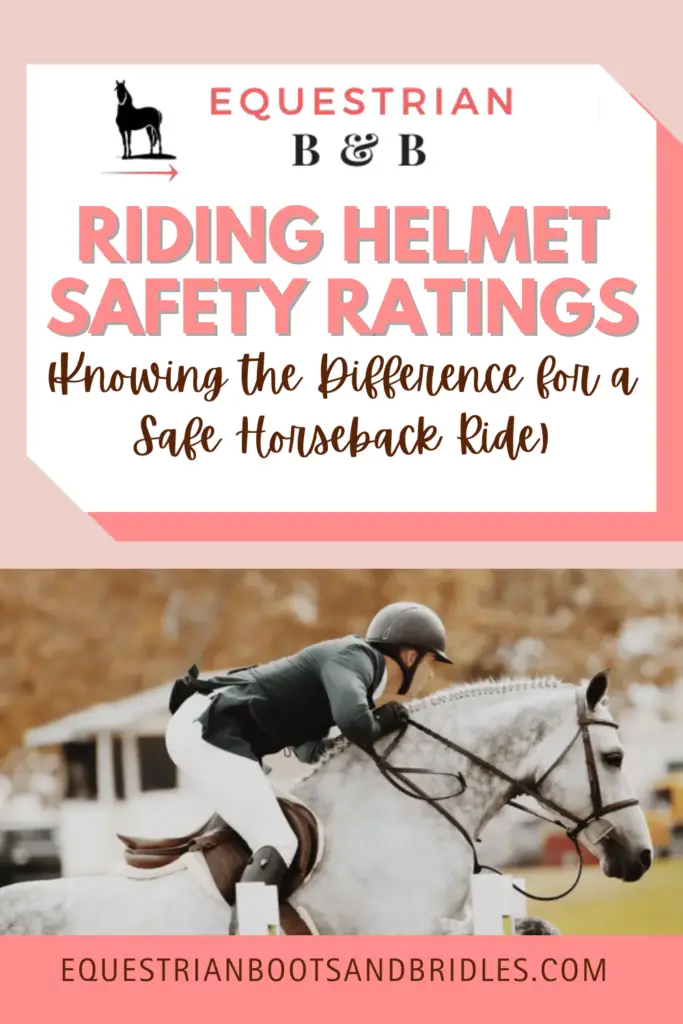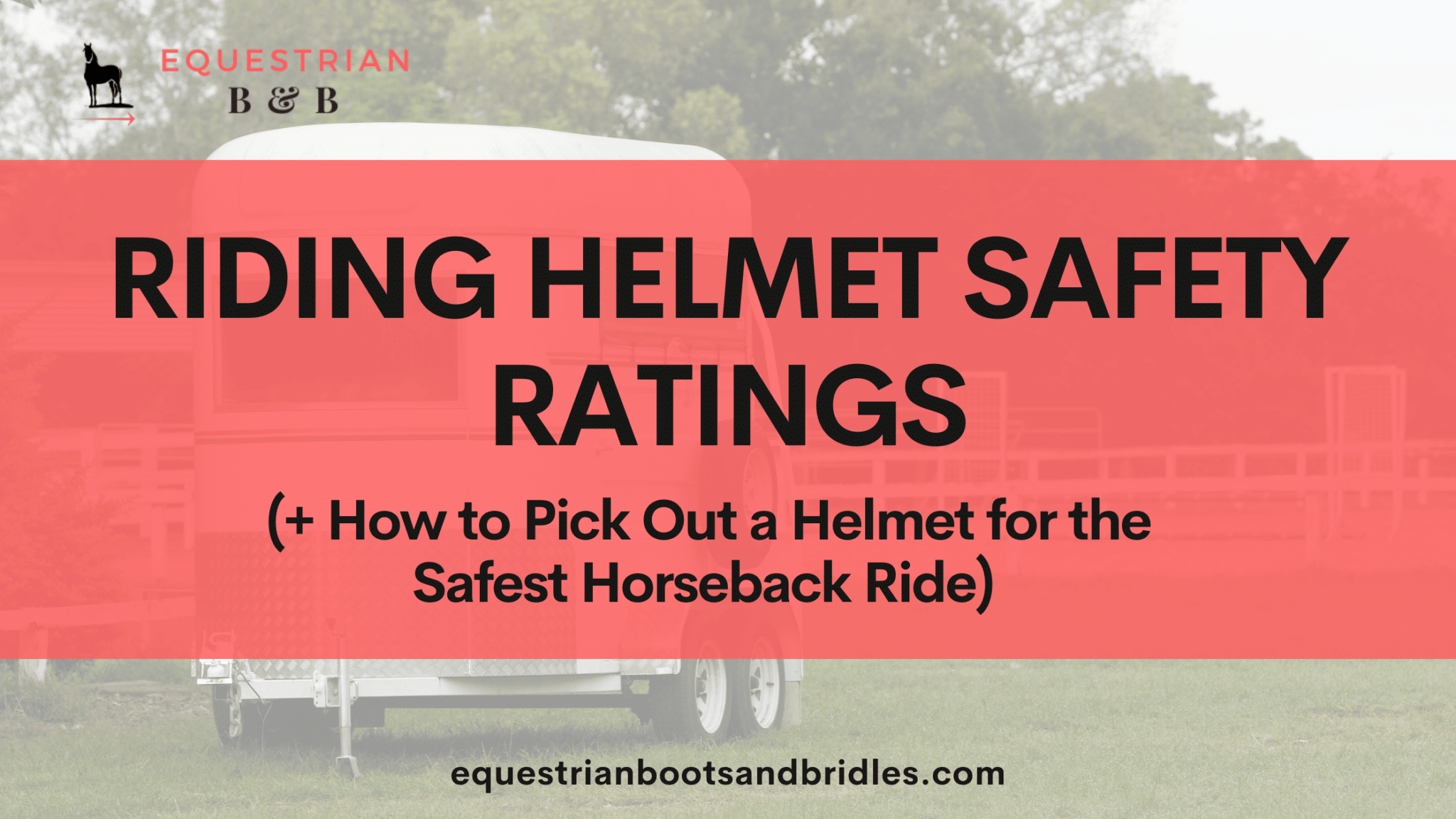Riding helmet design has come a long way from the days of yore. Older riders will tell tales of a fiberglass shell covered in velveteen that felt like it weighed 20 pounds. They’ll talk about how younger riders will never experience the misery of wearing a hot helmet that provided the barest of protection for their skulls. And that’s a good thing for all riders!
Helmet technology has made big strides in terms of providing a comfortable fit, ventilation, and skull protection. They do a much better job of reducing the risk of head injuries than their predecessors. Modern helmets get their design and safety cues from bicycle and motorcycle helmets because the sports have a common theme of riders prone to sudden dismounts at speed.
P.S. See this guide for recommendations on other types of horse riding safety equipment.
This guide contains affiliate links, which means we may earn a commission you decide to make a purchase (at no extra cost to you).
What Are Riding Helmet Safety Ratings?
In the United States, riding helmets are rated by two institutes: the American Society for Testing Materials (ASTM) and the Safety Equipment Institute (SEI). You’ll frequently see the two acronyms used together as ASTM/SEI, which ensures that the helmet you’re buying meets the safety standards set out by both institutes.
The FEI, or Federation Equestre Internationale, is a European organization that sets rules and standards for equine-related competition around the world. It accepts five quality testing labels for helmet safety standards.
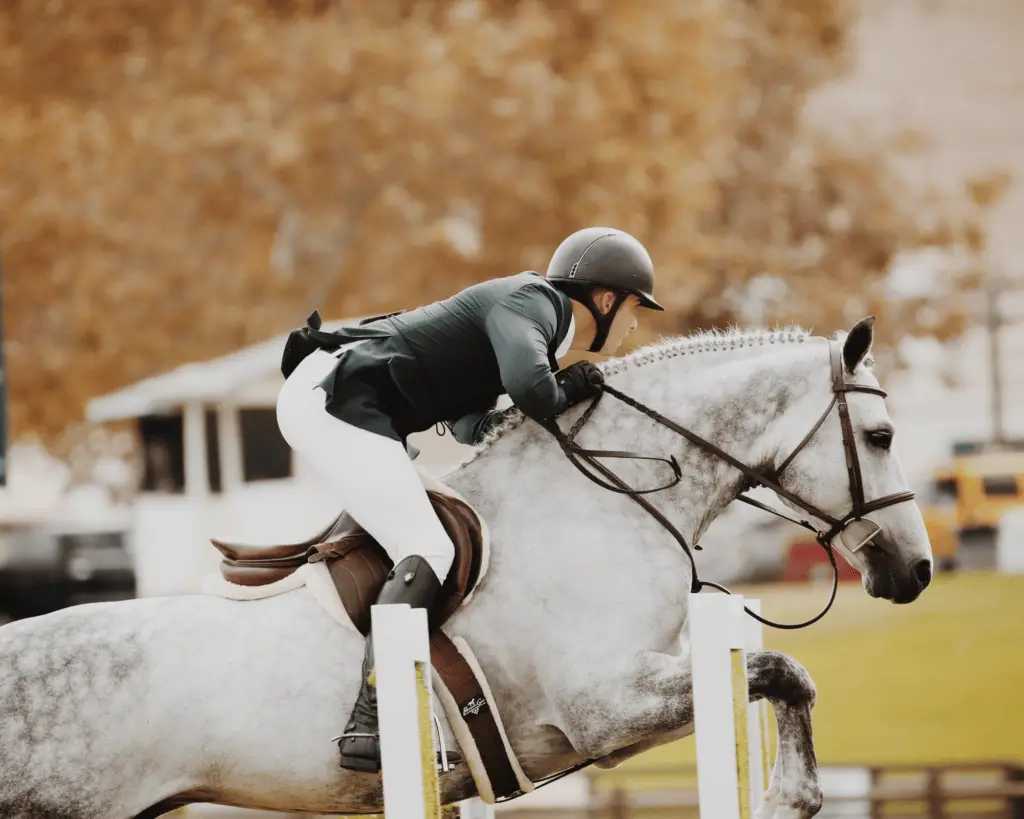
American Society for Testing Materials (ASTM)
The ASTM is an international organization that tests materials used for safety. Whenever a new safety material comes out on the market, the ASTM tests it according to the appropriate standards, or ones chosen by the manufacturer. Helmet manufacturers submit their horse riding helmets to the ASTM to make sure their helmet is capable of withstanding the force of a sudden deceleration and protecting the wearer.
As an example, one helmet maker, Troxel, submits their helmets to an independent testing laboratory and asks that they be tested to ASTM standard F1163. Troxel has already tested their helmets in-house, but impartiality is important when it comes to safety gear. The independent testing laf116 helps Troxel maintain that impartiality by putting the helmet through the standards listed in F1163, also known as the Standard Specification for Protective Headgear Used in Horse Sports and Horseback Riding.
The specification sets the minimum performance standards for the materials and construction used in the creation of the riding helmet. In the event the helmet meets the minimum performance standards, it’s sent to the SEI for certification.
Safety Equipment Institute (SEI)
The SEI confirms that the safety equipment is in compliance with the standards set by the ASTM, and that the product is accepted by the governing body of a given activity or occupation. Once the manufacturer of an equestrian helmet accepts the findings of the ASTM, the SEI follows up to ensure that manufacturers are producing their products in accordance with the ASTM standards. The SEI then sends helmets to an independent lab that’s certified to perform the requisite testing.
Governing bodies for equestrian sports that require SEI certification include:
- US Equestrian
- U.S. Polo Association
- United States Pony Clubs
You can find a list of ASTM/SEI certified riding helmets here.
Other Safety Testing Institutes
The same process is followed by all helmet makers that want to have their products carry the ASTM/SEI certification. There are other safety testing institutes that have their own standards, but this is not to say that they’re lesser than the ones set by the ASTM/SEI, or that you should pass on buying the helmet. In fact, some manufacturers submit their helmets to multiple institutes to get multiple certifications. You may see helmets that carry ratings on top of the ASTM/SEI certification that includes:
- British Safety Institute (BSI)
- SAI Global
- Snell Memorial Foundation
- INSPEC Certified
The FEI accepts helmets that are tested by these institutes as well as ones tested by the ATSM/SEI. The accepted international testing standards include:
- British Safety Institute – PAS 015:2011
- Australian Standard AS/NZ 3838
- Australian Standard ARB HS 2012
- American Snell E2001 and E20016
- CE mark including products referencing the VG1 performance specification, but excludes products with EN1384:2012
This is by no means an exhaustive list of riding helmet safety ratings, but it is comprehensive. Seeing one or more of these certifications on a helmet tells you that the riding helmet has undergone substantial safety testing.
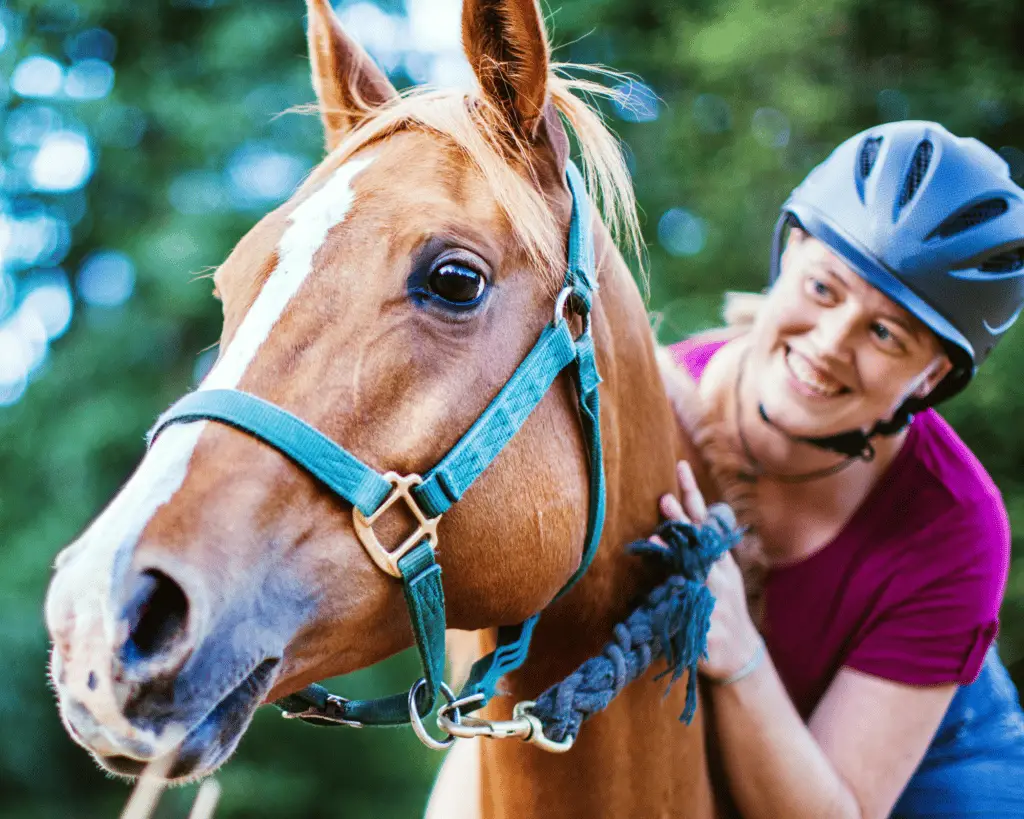
Testing Standards for Riding Helmets
Riding helmet safety ratings are assigned based on their performance during a test. The ASTM guidelines state how the testing laboratory is to perform the testing according to the aforementioned standards. That means you can be assured that a helmet that’s marked ASTM/SEI is one that will protect your head and perform well during an adverse event.
All safety testing institutions have their own methods, but their methods are intended to push helmet materials to their limit (even though their methods may differ from the ASTM). We’ll look at the ASTM testing standards to use as a baseline.
Evaluating the helmet prior to testing
Testing begins with an evaluation of the helmet for fit, coverage, design, and movement. That is, the helmet is checked to see how well it fits the average human head, and how much coverage it provides. The design plays a role in fit and coverage, which is why it’s also evaluated. It’s also checked to for movement when the helmet is correctly adjusted and fitted.
The steps involved in testing the helmet
Testing a helmet includes dropping the helmet from a height of six feet onto a flat anvil from different directions and angles. This is to mimic the average fall height of a rider and the different ways in which a rider might land. A second anvil with a sharp corner is used to test the helmet’s ability to resist the blow of a hoof.
The harness goes through its own test to find out if it can stay in place during a fall. This is done using a test head that’s designed to simulate the balance and weight of a human head, then dropped. If the straps hold and don’t stretch past a certain point, the harness passes the test.
Retesting a helmet
The helmets are retested for their ability to withstand further blows after being frozen to -20 degrees F, heated to over 120 degrees, and submerged in water for a period of at least 8 hours. If the helmet performs the same as it did before the extreme temperature and simulated weather conditions, it gains ASTM/SEI approval.
The Importance of Helmet Fit
Helmet fit plays a major role in the effectiveness of a riding helmet. Wearing a helmet that’s too loose means the helmet won’t be effective in the event of a fall, but you don’t want a tight fit, either. A tight fit makes the helmet uncomfortable and can distract you from what you’re trying to do with your horse. It won’t necessarily lead to a fall, but it can make you not want to wear a helmet.
The following are fitting guidelines to help you get the helmet to fit right and maintain its effectiveness.
Overall fit
The helmet should feel snug on your head, but not pinch or bind. Pull up and down on the helmet from the front and back to check for grip. You’ll know that you have the proper tension when the helmet pulls your forehead or eyebrows up and down without discomfort.
Placement
The helmet should rest no more than 3/4 to 1 inch on top of the eyebrows. Too low, and you’ll impair your field of vision. Too high, and the helmet won’t easily balance or provide proper protection.
Chin strap
The chin strap goes under the chin with a one-finger gap. That is, you should be able to slide one finger into the space between your chin and the strap, and no looser or tighter. This allows you to wear the helmet without it binding or coming loose during a fall. Your chin will prevent the helmet from sliding forward.
Side straps and back harness
The side straps keep the back harness in place, but all need to be adjusted properly to create the right amount of tension. For the side straps, they should come just in front of and below the earlobes and not crush them. Once the side straps are properly positioned, the back harness can be tightened to bring the side straps into place.
You may prefer to adjust the side straps and back harness prior to adjusting the chin strap as they will affect the placement of the chin strap.
Fit test
Once all of the straps are adjusted to your liking, it’s time to test the fit. Turn your head upside down or bend over so your head is pointing towards the ground. A properly fitted helmet won’t move from its position on your head. To further test the fit, release the chin strap so there’s nothing preventing the helmet from falling off. Once again, if the helmet doesn’t move and feels comfortable, you’ve adjusted it properly.
It’s worth noting that each helmet manufacturer makes different helmet shapes to fit different head shapes. You may find that one manufacturer doesn’t make a helmet that fits you, but as long as you see ASTM/SEI certification on the helmet, you can be assured that the helmet is capable of doing its job.
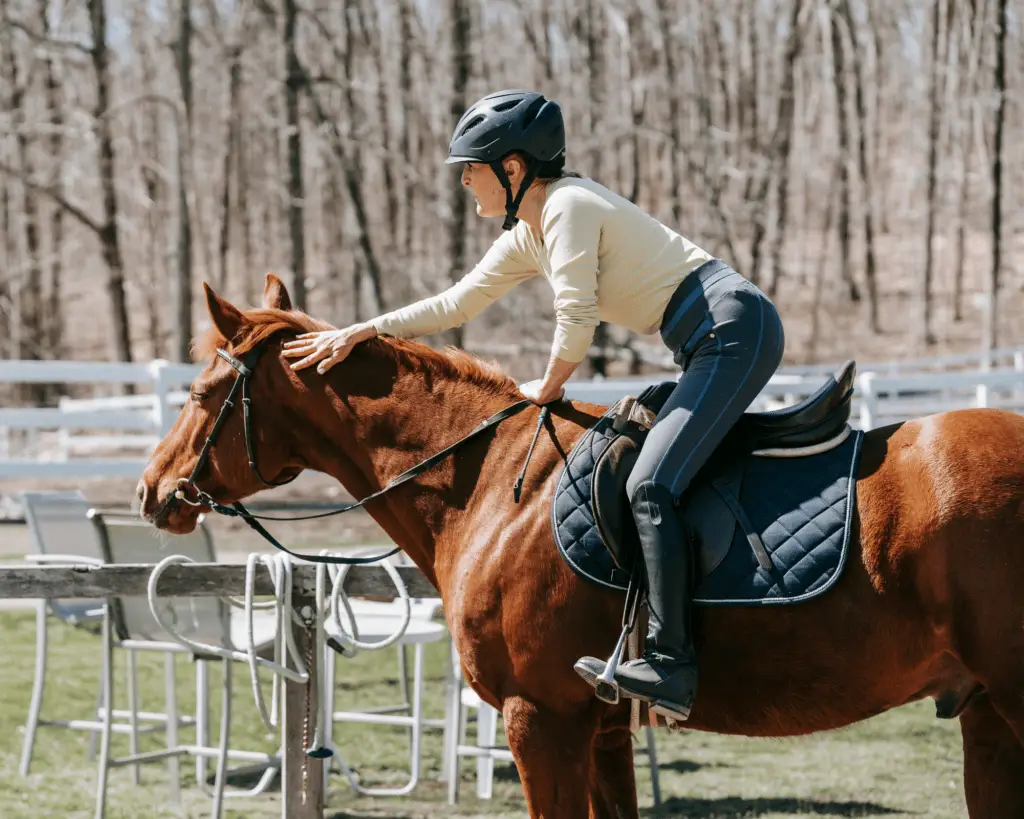
Picking the Right Helmet
There are hundreds of equestrian riding helmets on the market to pick from, and they come at a wide range of price points. Picking a helmet can be challenging, even with ASTM/SEI and other recognized testing standard certifications.
Here’s a look at some of the most popular riding helmets and why you should consider buying them.
Troxel Liberty
The Troxel Liberty is a nicely designed helmet that features a fully adjustable harness that lets you customize the fit. It features ventilation in the front and back for maximum airflow. It also comes in a nice selection of colors and prints for showing and casual riding.
Ovation Deluxe Schooler
The Ovation Deluxe Schooler is a low-profile design that features ventilation in the front, rear, and side-center of the helmet and a dial to adjust fit. It has a breakaway visor that can be replaced, and the liner is removable and washable. The helmet has a rubberized matte exterior that’s easy to clean.
Shop the Ovation Deluxe Schooler
Tipperary Royal
The Tipperary Royal delivers light protection with plenty of strength that comes from the high density ABS construction of the helmet. It also features a crush resistant banding and an EPS foam layer that disperses the energy of an impact. The helmet itself features a modern and clean appearance that’s in keeping with horseback riding’s conservative dressing style.
IRH Sport Equi Lite
The IRH Sport Equi Lite is an entry-level helmet that provides lightweight protection and a customizable fit. It provides ventilation through large, oblong openings in the front and back. It’s easily cleaned with soap and water, and features a glossy exterior.
In Conclusion
Riding helmet safety ratings are where you need to start when it comes to looking for your first or next helmet. You also need to pick a helmet that’s correct for your chosen discipline or activity. Taking a fall from a horse on a trail at a walking gait delivers less impact than taking a fall off a horse on an eventing course.
A standard helmet makes sense for the trail rider, but may not be enough protection for the eventing rider. However, you may decide that it’s worth it to spend the money on a helmet made with the latest in safety materials and technology. It all comes down to the fact that you need to protect your head while riding, and it starts with ASTM/SEI certification.
Oh, and if you’re in need of some hairstyle inspiration that will fit under your helmet, check out this article.
Like this post? Save it on Pinterest. Follow me on Pinterest.
